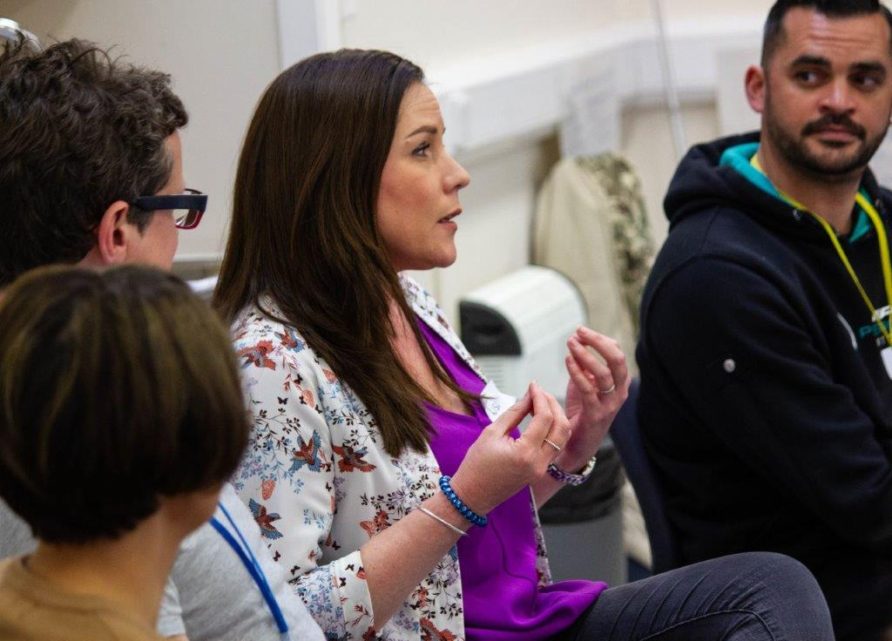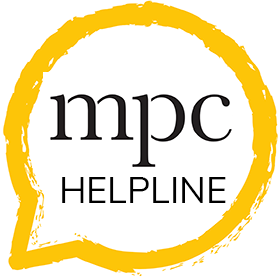
What is stammering?
Are you a parent wanting to find out more about stammering? Read more here.
You may hear the term stuttering as well as stammering. These two words mean exactly the same thing. We tend to talk about stammering in the UK while elsewhere it is called stuttering.
Stammering means the way that words get stuck or repeated but it also means the way that it affects someone inside (their thoughts and feelings) and how it affects their behaviour (i.e. their willingness to speak).
Outward aspects
A child who stammers may:
- repeat whole words, e.g. “and-and-and then I left”
- repeat single sounds or syllables, e.g. “c-c-come h-h-here mu-mu-mummy”
- prolong or stretch sounds, e.g. “sssssssometimes I go out”
- block, where the mouth is in position, but no sound comes out
- look as though they are tensing up or pushing hard. Often this can be seen around the eyes, nose, lips or neck but it can be seen anywhere in the body
- try to physically push the word out by making other movements. e.g. stamping a foot, shifting body position, nodding their head or jerking their head to one side, screwing up their eyes, tapping with a finger against something, clenching a fist or making other gestures with their hands
- do things because they are feeling self-conscious about stammering, e.g. looking down or away or covering their mouth
- breathe in an unusual way i.e. hold their breath while speaking, talk to the end of their breath and then take a gasp, or take an exaggerated breath before speaking (This sometimes happens because a child has been told to take a deep breath)
What may be less obvious:

A child who stammers may, or may not:
- feel anxious, worried, frustrated, self-conscious, embarrassed, ashamed, angry or even guilty about stammering
- think that they shouldn’t stammer because people don’t like it
- worry about how people will react if they stammer
- worry about what people will think of them if they stammer
- develop the idea that they are not good at talking
- avoid words that they worry they will get stuck on by choosing a different word. You may see that they start to say one word and switch to something else (i.e. “I played with my br- (brother)… best friend on Saturday”). Quite often you can’t see it because they arrange their sentence beforehand so it only contains safe words. This can mean that they sound a bit long-winded or unclear in the point that they are making.
- avoid speaking. There are many ways that children may do this, including saying “I’ve forgotten” or “It doesn’t matter”, not putting their hand up when they know the answer, or just saying as little as possible. Saying names can be especially hard for children who stammer because there is no alternative word that they can use.
- avoid some speaking situations, either by not volunteering, by saying they don’t want to do something, by hanging back or not joining in, or by asking someone to speak for them. Difficult situations can be asking or answering questions in class, speaking in assembly, answering the register, saying your name, talking to anyone in authority (especially if you’re in trouble!), speaking to groups of people or speaking to someone they don’t really know, like asking for something in a restaurant or shop.
Children can become so good at using these strategies that other people may not even realise they stammer or may think that they have a very mild stammer.
Things to remember
How much a child stammers outwardly does not tell us much about how much it bothers them.
I want to know more about stammering
Read about when stammering starts, whether girls or boys are more likely to stammer and what causes stammering here.
How can I help my child?

Watch a video and read about practical things that you can do to help your child.
Get help
Go to our get help page to find out what to do if you are worried about your child.

Sometimes you just need someone to talk to


Sometimes you just need someone to talk to
Our Helpline, 020 3316 8100, is open during office hours (9am-5pm) and voicemail messages can be left when the office is closed.
“This training met my expectations and I now have an increased knowledge of theory and improved knowledge of PCI practice, therapist skills, structure of sessions and strategies.”
